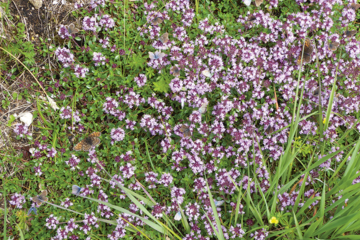BETWEEN ORCHIDS & BUTTERFLIES
The ski slopes of the Tiroler Zugspitz Arena, covered in snow in winter, are transformed into species-rich flower meadows with rare plants and mosses in summer. So is there any truth to the rumour that skiers harm alpine plant diversity? Landscape expert Dr. Dipl. Ing. Karel Cerny knows the answer.
The ecologist and landscape planner Dr. Dipl.-Ing. Karel Cerny has been studying the regional flora for a long time. In his profession, he maps mountain ranges in the area around the Zugspitze. In the process, he got to know the numerous native plant species. While most people are familiar with orchids as exotic houseplants, for example, Cerny can list more than 15 species off the top of his head that grow in and around the Tiroler Zugspitz Arena in summer. You can get to know them wonderfully on a beautiful orchid hike. One of them: Orchis ustulata, also known as burnt orchid, is one of his favourite plants. However, these filigree flowers are visibly disappearing, and in Germany the species is already classified as critically endangered. Malicious tongues claim that the busy ski slopes are to blame. But what is the truth of this rumour?
Different plants, different demands
Karel Cerny knows: not much. For various reasons, native plants actually thrive better on ski slopes. For example, these areas are not treated with pesticides. Thus, the soil offers the regional plant species their usual and natural habitat in the summer in the Tiroler Zugspitz Arena. "Agriculturally used areas are treated with fertiliser to promote plant growth," explains Karel Cerny. "But only certain plants can grow better. Because different plants also have different requirements." The high nitrogen content of fertiliser does not accelerate the growth of all plants, the expert knows. For example, species that cannot process the nitrogen are shaded out by fast-growing plants and eventually even completely displaced.
Summer in the Tiroler Zugspitz Arena: Butterflies are part of it too
Another plant whose slow disappearance worries ecologists is the yellow gentian. "It used to be common in this area, but now you only find the plant sporadically," explains Cerny. In addition, the expert also points to the disappearance of some animals and insects. "A rich plant world also includes butterflies, for example," he emphasises. In our cities, you encounter the insects less and less often, but around the Zugspitze, in the TirolerZugspitz Arena, many of the colourful butterflies still flutter in summer.
Grazing the vegetation before winter
"In order to preserve the great diversity of plants, the ground has to be cleared before winter," explains Cerny. To do this, grasses and plant remains must be removed in the Tyrolean Zugspitz Arena at the end of summer, when the flowers have faded. If this is not done, the remains remain under the icy snow cover until next year. When spring arrives and with it the first fresh plant shoots, these are hindered in their growth by the remains of the previous year. Incidentally, the expert considers grazing to be the best way to implement uncovering. For this purpose, farm animals graze on the slopes. "Of course, it is also okay to mow off the old plant remains," Cerny emphasises. So in order to be able to admire butterflies and native plants in summer in the Tiroler Zugspitz Arena in the future, no one has to give up skiing.
Copyright pictures: Cerny family












